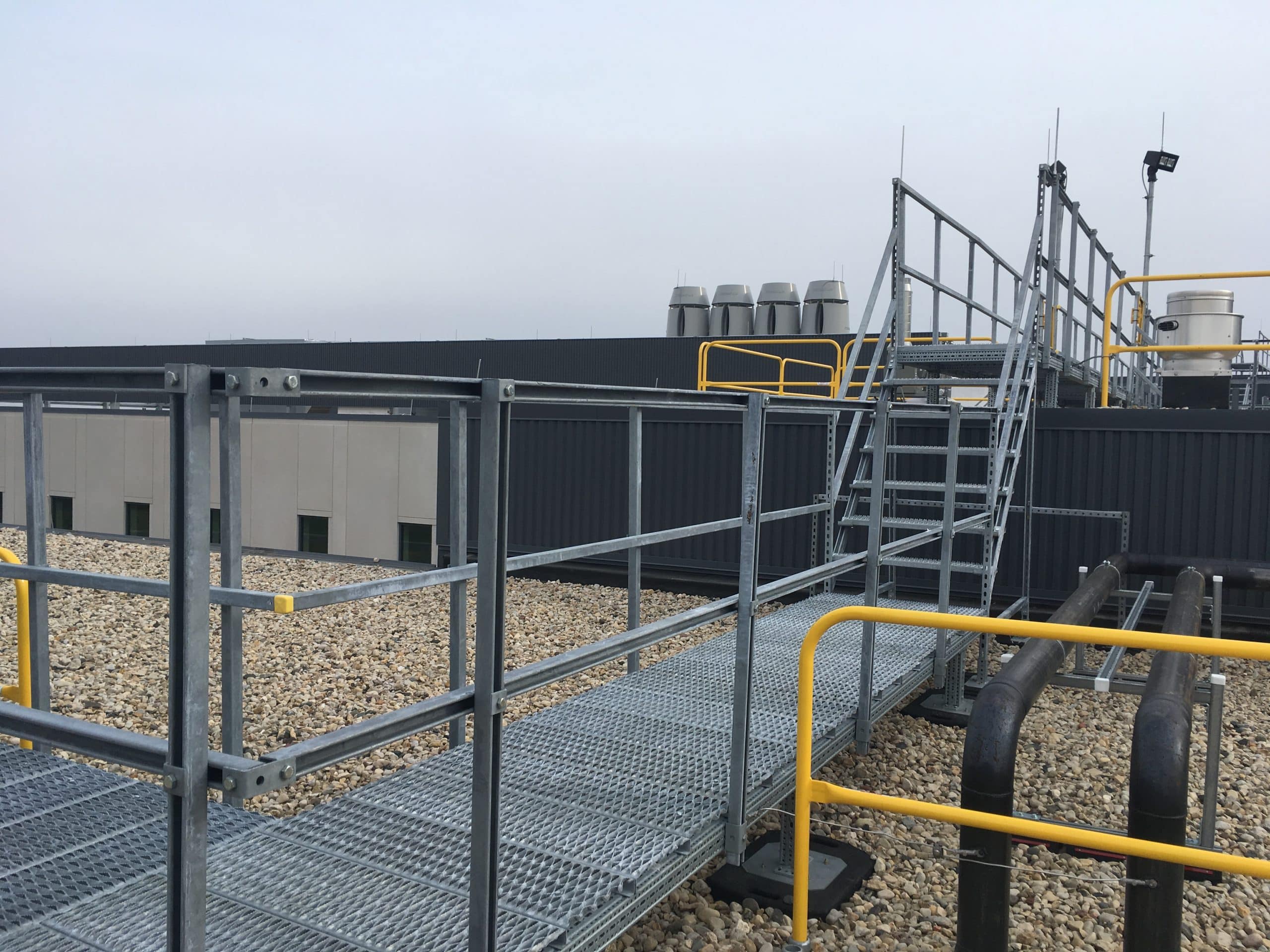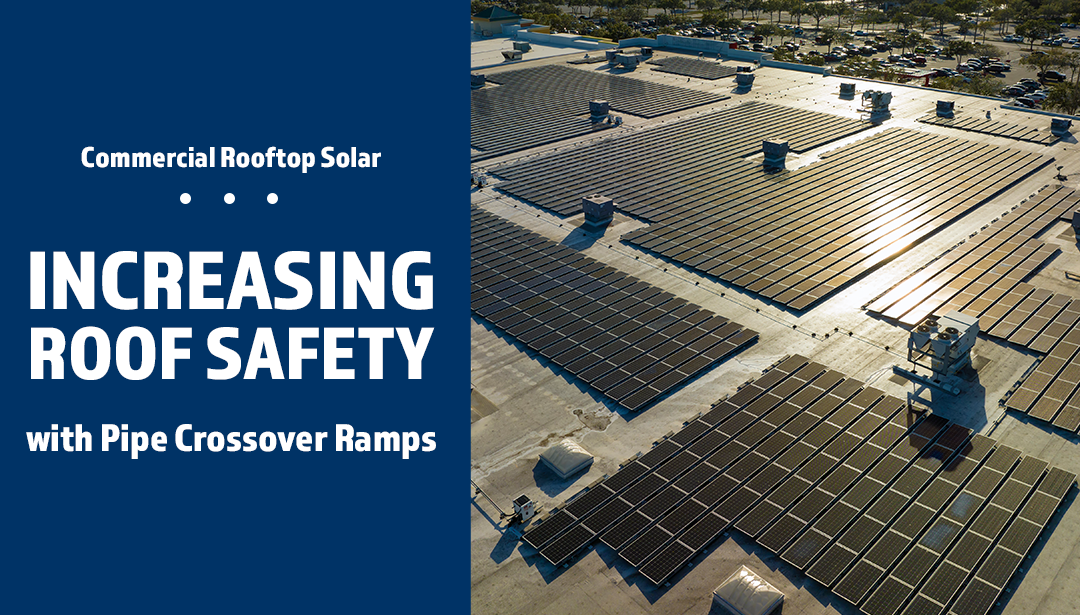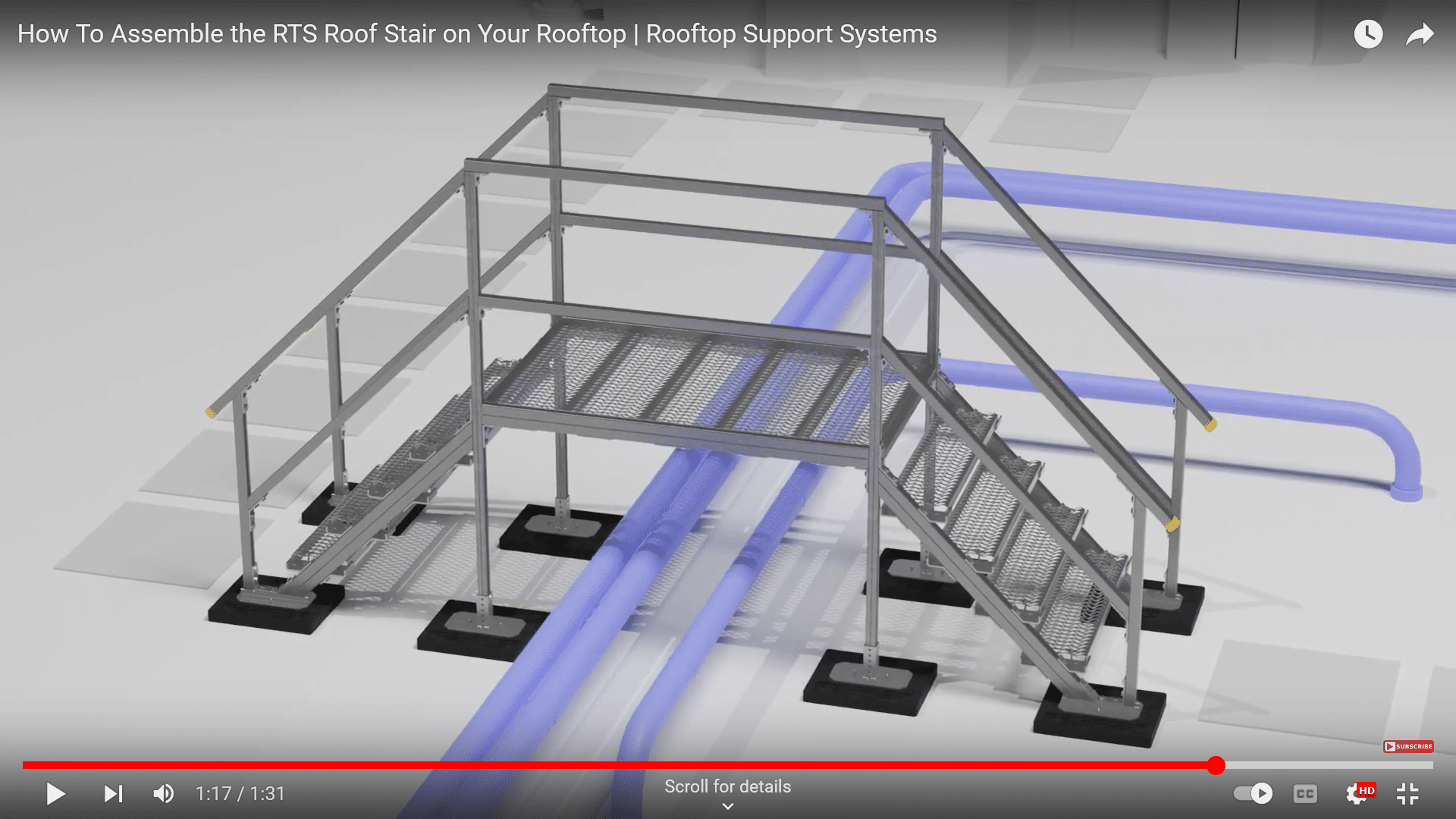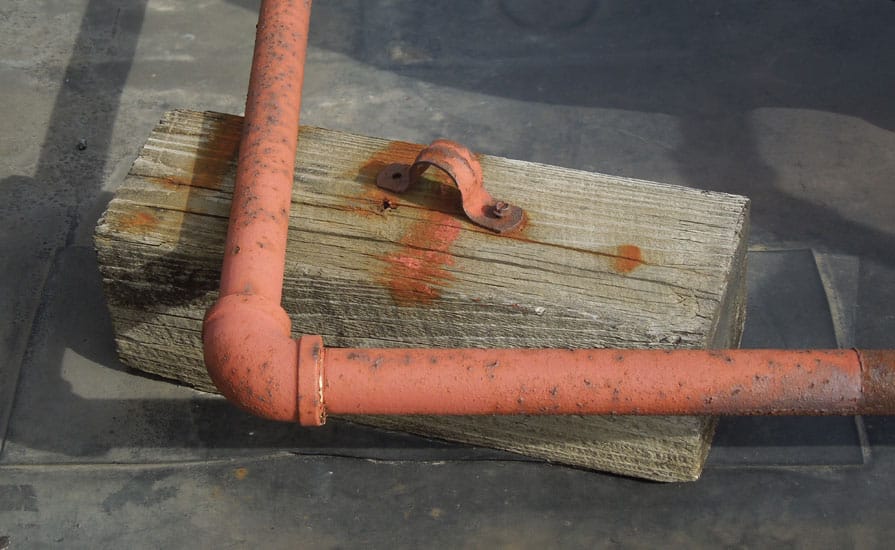Roof Stairs and other access solutions are an absolutely essential part of your rooftop safety plan. For those unfamiliar with the term, access solutions refer to any methods, systems, or structures or pieces of equipment designed to provide safe and efficient access to areas that are otherwise difficult to reach.
Access Solutions ensure that workers can reach elevated, confined, or hazardous areas safely and effectively to perform maintenance, inspections, repairs, or other necessary tasks. Safe access to rooftop structures, equipment, HVAC, mechanics and electrics is necessary to be in compliance with safety regulations, as well as minimize the risk of accidents, and enhance the efficiency and productivity of maintenance operations.
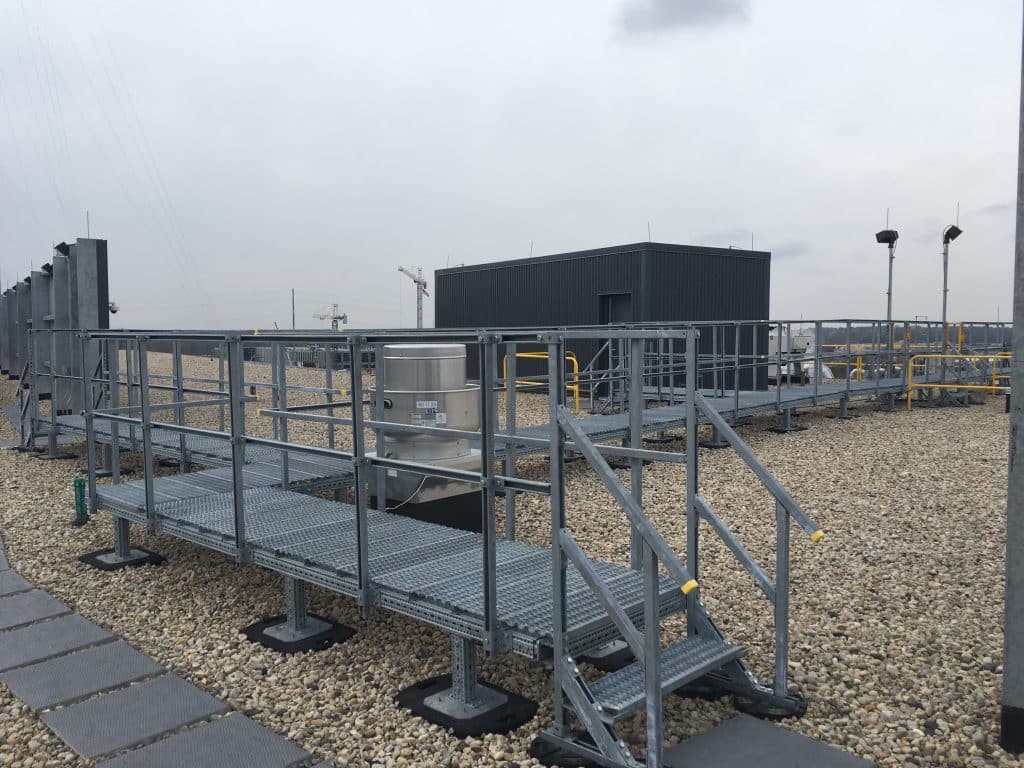
What Are Roof Stairs?
The Importance of Roof Stairs for Safety and Efficiency
Roof stairs are specialized staircases designed to provide safe and convenient access to rooftop areas. They are typically installed in commercial, industrial, and sometimes residential buildings to facilitate safe rooftop navigation over obstacles or changes in roof elevation, as well as provide access for maintenance, inspections, and repairs.
They provide a stable, compliant, and versatile solution that enhances safety, improves efficiency, and supports the overall maintenance strategy of a building. By mitigating risks and facilitating easier access, rooftop stairs contribute significantly to the operational integrity and safety of both residential and commercial properties.
Stairs are crucial to safety for many commercial rooftops because they provide an efficient solution to a host of common rooftop issues, such as:
- Changes in Rooftop Elevation
- Elevated Maintenance Doors and Panels on Roof Equipment
- Rooftop Obstacles (HVAC Pipe & Duct, or other structures)
In many instances, providing safe and efficient access to rooftop areas for maintenance and inspection tasks cannot be accomplished without the use of rooftop stairs or other roof access solutions. Besides providing safety and efficiency, stairs are also a versatile solution that is both durable and cost-effective.
The first key safety point to mention when discussing the merits of roof stair regards prevention of falls and accidents. Rooftop stairs are designed to provide a stable and secure means of access, significantly reducing the risk of falls and accidents. This is particularly important in commercial and industrial settings where rooftop maintenance is frequent and involves potentially hazardous tasks.
A second key safety point to mention is the compliance with safety regulations. Many building codes and safety regulations mandate the use of safe access systems, including rooftop stairs, to ensure worker safety. Complying with these regulations helps prevent legal liabilities and ensures a safer working environment.
Roof stairs provide ease of access. they offer a straightforward and quick way to navigate over obstacles, changes in roof elevation, and reach rooftop equipment for maintenance and inspection. Safe, fast access is crucial, not only routine maintenance tasks, but also for emergency situations where quick access is essential in order to minimize damage to equipment and structures.
Compared to ladders, roof stairs offer better mobility and safety, allowing maintenance personnel to carry tools and equipment safely and easily. This enhances productivity and ensures that tasks can be completed more efficiently. Stairs also provide better accessibility. Unlike ladders, which might be difficult for some workers to use, stairs provide a more accessible means of access for a wider range of individuals, including those who might have physical limitations.
Roof stairs are often constructed from durable materials that can withstand harsh weather conditions, ensuring they remain safe and functional over time. Longevity is important for maintaining consistent access to rooftop areas. Roof stairs require minimal maintenance, which is beneficial for the building’s overall maintenance strategy. They offer a reliable access solution that doesn’t frequently need repair or replacement. Investing in proper RTS Stairs can lead to cost savings in the long run by reducing the number of accidents and associated costs, as well as improving the efficiency of maintenance tasks which can prevent costly repairs and downtime.
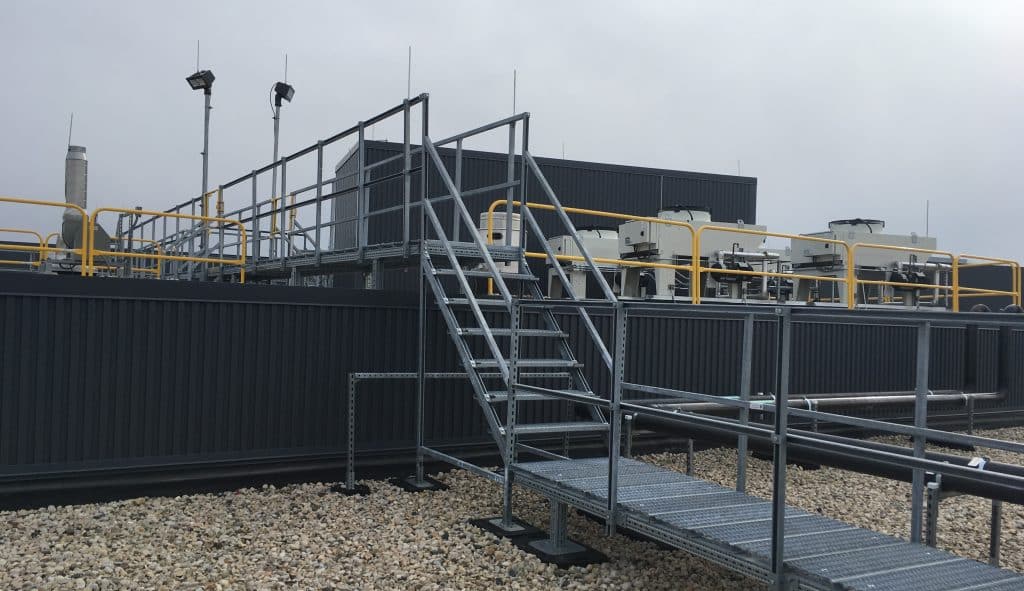
Benefits of Integrating Roof Stairs into Building Designs
- Prevention of Falls and Accidents
- Compliance with Safety Regulations
- Ease of Access & Enhanced Mobility
- Accommodating to Various Roof Designs
- Accessible for All Workers
- Weather Resistant
- Low Maintenance
- Reduces Long-Term Costs
Features of RTS Roof Stairs
Roof stairs are built with safety in mind, often including handrails, non-slip surfaces, and stable, wide steps to prevent falls and ensure secure footing. Constructed from robust, weather-resistant materials such as galvanized steel or aluminum to withstand harsh environmental conditions and provide long-term durability. Roof stairs can be customized to fit various roof types, including flat, sloped, or multi-level roofs, ensuring accessibility to all necessary areas.
For more information about RTS Roof Stairs, visit our Roof Stair Product Page, where you’ll find additional product information, including: material options, size specifications, product submittals, drawings, installation instructions, and more.
Watch our RTS Roof Stair video on YouTube
Have a project and in need of guidance?
Let our experts assist you in making the right decision!

